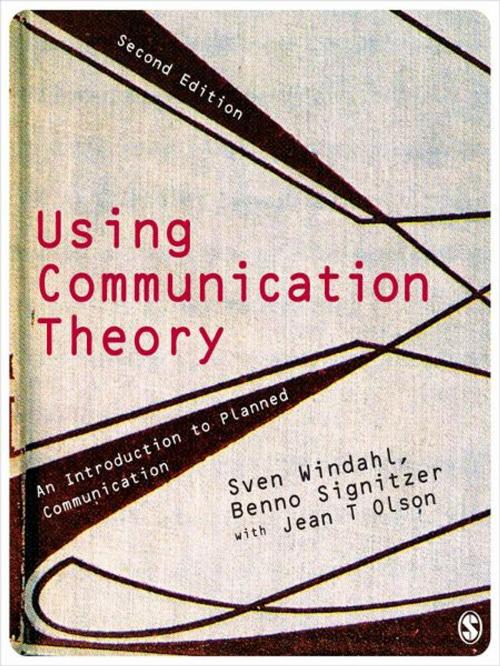Using Communication Theory
An Introduction to Planned Communication
Nonfiction, Reference & Language, Language Arts, Communication, Business & Finance, Business Reference, Business Communication, Reference| Author: | Dr Sven Windahl, Dr Benno Signitzer, Jean T Olson | ISBN: | 9781446246627 |
| Publisher: | SAGE Publications | Publication: | November 18, 2008 |
| Imprint: | SAGE Publications Ltd | Language: | English |
| Author: | Dr Sven Windahl, Dr Benno Signitzer, Jean T Olson |
| ISBN: | 9781446246627 |
| Publisher: | SAGE Publications |
| Publication: | November 18, 2008 |
| Imprint: | SAGE Publications Ltd |
| Language: | English |
"Using Communication Theory was a rarity in bridging the gap between ideas and practice. It was itself a model of good communication and in its second, revised edition, it is still a most reliable and accessible guide to the lessons that communication theory and research offer to practitioners, especially in planning for change."
- Denis McQuail, Professor Emeritus, University of Amsterdam
"Using Communication Theory has become a classic in the education of communication. It is the comprehensive and self-evident source for theories and models, forming the base for the study of professions requiring communication planning."
- Larsåke Larsson, Örebro University
What does theory have to do with the practice of communication? Communication planning is used daily by thousands of people: public relations practitioners, technical writers, information campaigners, advertising professionals, organization consultants, educators, health communicators and more. Without a solid understanding of communication theory, practitioners have difficulty getting their messages heard.
The second edition of this best-selling textbook has been updated with the student firmly in mind. With new learning features that directly engage with the practical side of theory, students will:
- Practice what they learn with activities and exercises.
- Apply their own experiences to theory through prompts to reflection.
- Consolidate their learning with highlighted definitions and lists of key terms.
- Take it further with boxed excerpts from classic texts.
Showing how theories relate directly to the planning and experience of effective communication, Using Communication Theory - 2nd Edition provides indispensable insights into the practical nature of communication theory. In today’s landscape of communication overload, this book remains an essential, authoritative guide for both students and practitioners.
"Using Communication Theory was a rarity in bridging the gap between ideas and practice. It was itself a model of good communication and in its second, revised edition, it is still a most reliable and accessible guide to the lessons that communication theory and research offer to practitioners, especially in planning for change."
- Denis McQuail, Professor Emeritus, University of Amsterdam
"Using Communication Theory has become a classic in the education of communication. It is the comprehensive and self-evident source for theories and models, forming the base for the study of professions requiring communication planning."
- Larsåke Larsson, Örebro University
What does theory have to do with the practice of communication? Communication planning is used daily by thousands of people: public relations practitioners, technical writers, information campaigners, advertising professionals, organization consultants, educators, health communicators and more. Without a solid understanding of communication theory, practitioners have difficulty getting their messages heard.
The second edition of this best-selling textbook has been updated with the student firmly in mind. With new learning features that directly engage with the practical side of theory, students will:
- Practice what they learn with activities and exercises.
- Apply their own experiences to theory through prompts to reflection.
- Consolidate their learning with highlighted definitions and lists of key terms.
- Take it further with boxed excerpts from classic texts.
Showing how theories relate directly to the planning and experience of effective communication, Using Communication Theory - 2nd Edition provides indispensable insights into the practical nature of communication theory. In today’s landscape of communication overload, this book remains an essential, authoritative guide for both students and practitioners.















